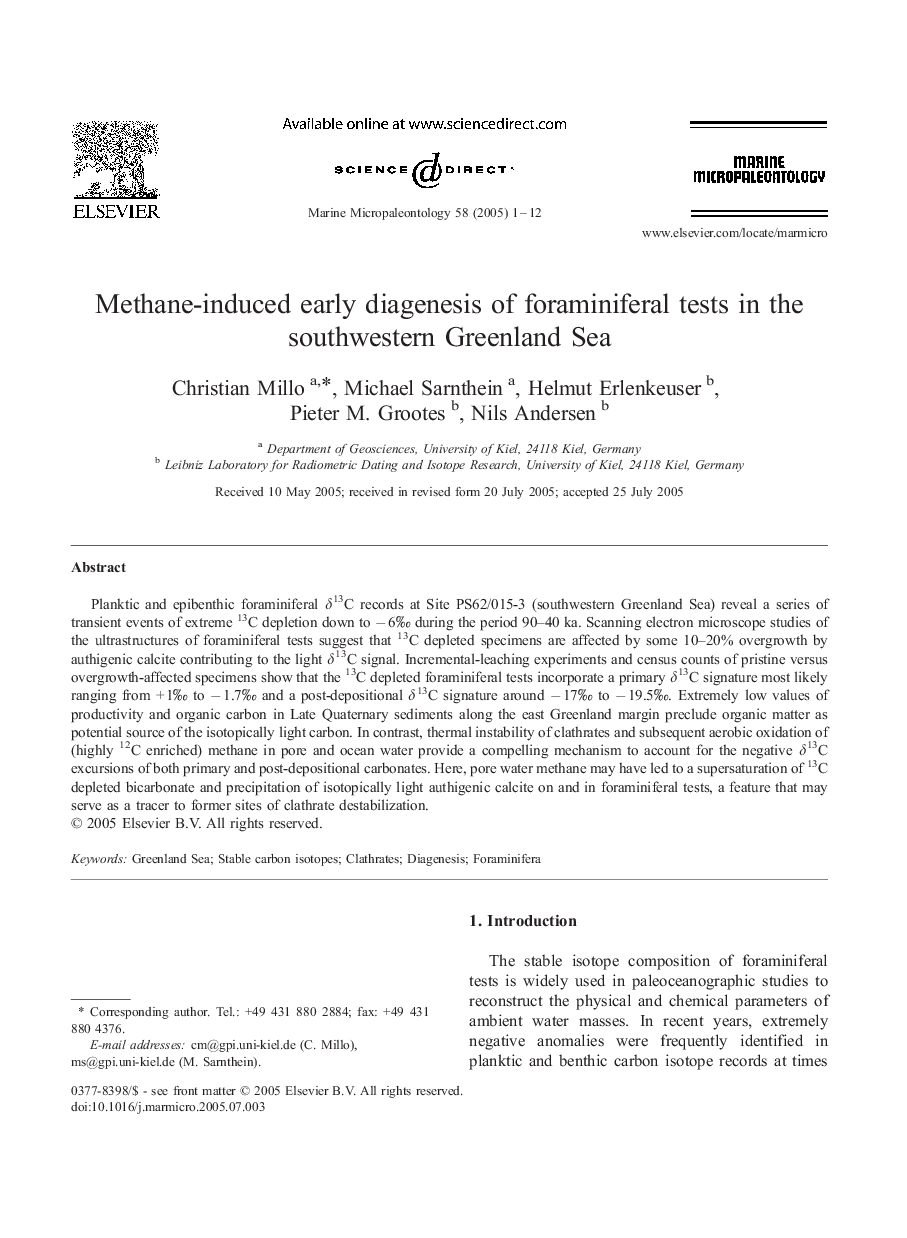| Article ID | Journal | Published Year | Pages | File Type |
|---|---|---|---|---|
| 9539548 | Marine Micropaleontology | 2005 | 12 Pages |
Abstract
Planktic and epibenthic foraminiferal δ13C records at Site PS62/015-3 (southwestern Greenland Sea) reveal a series of transient events of extreme 13C depletion down to â 6â° during the period 90-40 ka. Scanning electron microscope studies of the ultrastructures of foraminiferal tests suggest that 13C depleted specimens are affected by some 10-20% overgrowth by authigenic calcite contributing to the light δ13C signal. Incremental-leaching experiments and census counts of pristine versus overgrowth-affected specimens show that the 13C depleted foraminiferal tests incorporate a primary δ13C signature most likely ranging from + 1â° to â 1.7â° and a post-depositional δ13C signature around â 17â° to â 19.5â°. Extremely low values of productivity and organic carbon in Late Quaternary sediments along the east Greenland margin preclude organic matter as potential source of the isotopically light carbon. In contrast, thermal instability of clathrates and subsequent aerobic oxidation of (highly 12C enriched) methane in pore and ocean water provide a compelling mechanism to account for the negative δ13C excursions of both primary and post-depositional carbonates. Here, pore water methane may have led to a supersaturation of 13C depleted bicarbonate and precipitation of isotopically light authigenic calcite on and in foraminiferal tests, a feature that may serve as a tracer to former sites of clathrate destabilization.
Related Topics
Physical Sciences and Engineering
Earth and Planetary Sciences
Palaeontology
Authors
Christian Millo, Michael Sarnthein, Helmut Erlenkeuser, Pieter M. Grootes, Nils Andersen,
